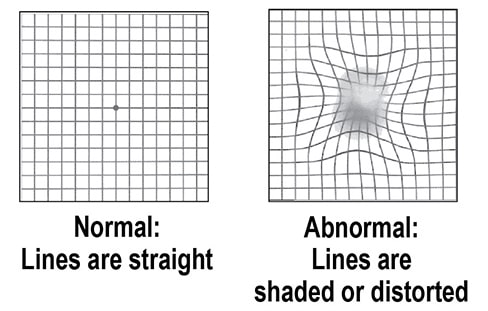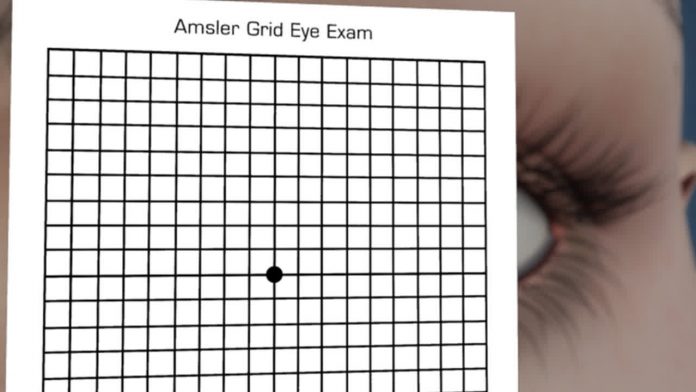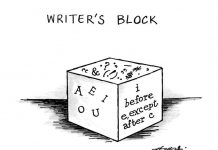An Amsler grid is a test card that looks a lot like graph paper and is used for detecting defects in our central visual field. Your optometrist or ophthalmologist may refer to your macula, which is located in the center of the retina at the back of our eye, when discussing the test.
Doctors normally use this test if you have are experiencing vision changes, distorted or strange visual symptoms. Many doctors use the test routinely with each patient.
When using the grid, to be accurate, you should hold the paper at your normal reading distance. The test is done for each eye, so you will probably use an occluder or cover the eye that is not being tested. If you wear glasses or contacts for reading, you should keep them on during the test.

In the center of the grid is a black dot. You doctor will have you look at the dot and tell him what you see. The idea is to focus on the center of the grid and “notice” the grid around the dot (but not look away from the center). If the lines are fuzzy, wavy, or missing, there may be a problem with your vision.
If everything looks normal: the lines of the grid are straight and clear, nothing is wavy or fuzzy, and the grid looks like it’s complete, then your doctor may determine that your central visual field is most probably normal.
However, if there are gaps in the graph or you notice any distortions, like the wavy or bent lines, make sure to tell the doctor or technician. They may have you draw what you’re seeing, or not seeing, on the grid or another piece of paper.

The most common cause of distortion is a condition called Macular Degeneration. Other macular dysfunctions can be found through this testing, as well as neurological problems and glaucoma.
Macular Degeneration is a normal part of the aging process, but can be caused by things other than aging and in young people, as well as those who have added more birthdays The doctor may refer to ARMD, or AMD, which stands for Age Related Macular Degeneration.

If your doctor determines that you have macular degeneration, he will probably send you home with your own Amsler Grid and have you monitor your vision. A sample of the test can be found online at Lighthouse.org.
Several studies have indicated a link between AMD and nutrition. It’s been shown that specific nutritional supplements can slow down age-related macular degeneration progression.
Regular eye exams are an important part of maintaining our health. Any major or abrupt changes in vision should be noted and an appointment should be scheduled with your eye care provider.


















